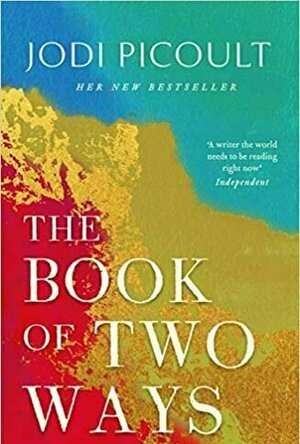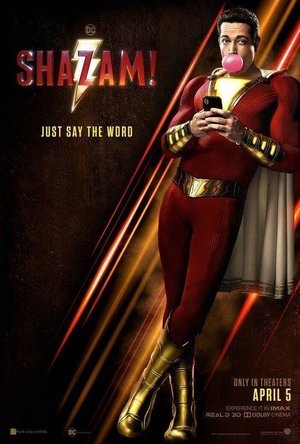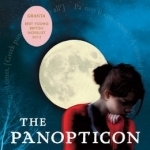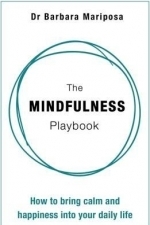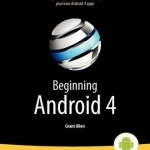
Beginning Android 4
Book
Beginning Android 4 is an update to Beginning Android 3, originally written by Mark Murphy. It is...
Kristy H (1252 KP) rated The Book of Two Ways in Books
Oct 15, 2020
"For someone who makes a living through death, I haven't given a lot of thought to my own."
I love Jodi Picoult and her books, and I count many of them among my favorites. I was intrigued by this story, but overall, this book wasn't for me. I always appreciate when an author does their research for a book, but there was so very much Egypt (from Dawn) and various scientific concepts (via Brian) in this book. Some will really enjoy this and if these were topics I was more interested in, I probably would have too. But I read this book while was I was working endless days, and I just wanted to lose myself in a story and not read pages upon pages about ancient Egypt or so much scientific theory about multiverses. It was a lot.
When the novel focused on the characters, I was more in. Dawn is an intriguing protagonist--she's not always going to make choices that the rest of us might agree with. She takes a long hard long at her life--her regrets, her past love, her marriage, and more. I don't want to give too much away, but the various paths concept is an interesting one, for sure. I enjoyed both of them--especially Dawn's work as a death doula in her Boston life and then her relationship with Wyatt (who seemed very enigmatic--I could see why she was drawn to him) in Egypt.
No matter what, Picoult does what she does best--give us a fascinating look at love, marriage, and loss. She makes us think and question what we might do in Dawn's position. There are some twists and surprises thrown in along the way. I skimmed some of the Egypt stuff (I'm sorry!) and might have forgiven it all together, except then she gave me an up-in-the-air ending. After all that reading and reading! Sigh. No resolution endings seem to be a theme lately. And not one I'm a fan of, either. So, with that, a 3-star read for me. But I'll read Picoult's next book eagerly, as always.
BankofMarquis (1832 KP) rated Shazam! (2019) in Movies
Sep 1, 2019
SHAZAM is a fun. light, comedic-ish film that will appeal to kids and tweens and will be considered "not bad" by older teens and adults - and that is an improvement for a DC comic book film.
Asher Angel stars as Billy Batson, a troubled teenager with family/parental issues (is there any other kind in these types of films?) who is given the power of SHAZAM by a mysterious wizard (the always dependable Djimon Hounsou), when he says the magical word SHAZAM he is instantly changed into the SuperHero SHAZAM. The Superhero part of this character is played by Zachary Levi (TV's CHUCK) and that is the first problem for me with this film, I didn't feel that these 2 actors connected much to form the illusion of 1 person. Asher is all "broody and moody" - you know, the way an adult would direct a teenage actor to perform as a troubled teen - while Levi, who is having some fun, looks like he is trying just a bit too hard to showcase his "inner teenager" while wrapped inside a body hugging, muscle enhancing costume.
Billy Batson is sent to a foster home full of a "It's A Small World" group of troubled youth that have - despite their differences - formed into a family. Want to bet that Billy figures out that "family" does not mean his mother and father who abandoned him but rather those around you that love and care for you?
All of the kids in this "family" are well played, as are the "father and mother" figures. Standouts are Faithe Herman as smart-as-a-whip/cute-as-a-button Darla and, especially, Jack Dylan Grazer (hypochondriac Eddie in IT: CHAPTER 1) as the lad who becomes Billy's best friend. He is just as fun and charismatic as he was in IT. To be honest, I think I wanted more of a movie about this group of people than the typical "Super Hero/Super Villain" film.
However, I can forgive this film for focusing on the Hero/Villain dynamic for Mark Strong (SHERLOCK) is wonderfully villainous as the bad guy with daddy issues of his own and "that guy" actor John Glover is in it all too briefly as his dad.
Director David F. Sandberg (ANNABELLE: CREATION) does a nice job of keeping the action going at a fast enough pace to keep things entertaining - albeit in a way that was rather pedestrian and "nothing new". But he aims this film squarely at the older kid/younger tween audience and they will enjoy this very much, whilst the rest of us will not be bored as we accompany them.
Letter Grade: B
7 stars (out of 10) and you can take that to the Bank(ofMarquis)

STEINS;GATE HD
Games and Entertainment
App
Since 2009, the STEINS; GATE series has sold over 1,000,000 copies! "STEINS;GATE", based on the...

Note Rush: Learn Music Sight Reading + Piano Notes
Games and Music
App
A fun game for practising note reading on the music staff to help you learn piano, keyboard, flute,...
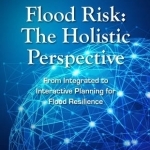
Flood Risk: The Holistic Perspective
Zoran Vojinovic and Jingmin Huang
Book
According to the International Disaster Database (EM-DAT), over the last seventy years, floods have...

STEINS;GATE HD KR
Games and Entertainment
App
STEINS;GATE has sold over 1,000,000 copies since 2009! "STEINS;GATE", based on the anime currently...

Learn Japanese - Phrasebook for Travel in Japan
Travel and Education
App
**Best Japanese learning app on the go! Ranks above 100 place in Travel section in the App Store in...
Eilidh G Clark (177 KP) rated The Panopticon in Books
May 13, 2017
At the beginning of the novel, the fifteen-year old Anais is governed by the state. In contemporary British society, a child under the age of sixteen, regardless of her social situation is, by law, governed by an adult/s. Anais has lived her life in the care system with the exception of a short period in which she lived with an adopted mother. It is for this reason that she is able to see society from outside of the family unit. By creating the motherless child, Fagan presents Anais as the ‘other’ from both a societal perspective- ‘communities dinnae like no-ones,’ and from the viewpoint of the protagonist, ‘What they really want is me dead,’ (TP, p.23). Without a family, and through a lack of legitimate information regarding her birth mother, Anais believes that she was created in a lab:
I’M AN experiment. I always have been, It’s a given, a liberty, a fact. They watch me. Not just in school or social-work reviews, courts or police cells – they watch everywhere. […] They’re there when I stare too long or too clearly, without flinching. […] They watch me, I know it, and I can’t find anywhere any more – where they can’t see, (TP, Prologue).
Note that in the above quotation, the protagonist describes her assumed identity as a ‘liberty’. Liberty, in this case, means freedom from the oppressive nature of the family. Although Anais desires the nurturing aspect of the family, ‘I just want my mum,’ (Tp, p.269), her lack of family exposes her to the nature of contemporary society as a constant monitoring of civilians. In the above quotation, the repetition of ‘they’ suggests that she feels outside of the norm. The most important aspect of the above quote however, is that it is told from the protagonist’s thoughts. While Fagan gives Anais a certain amount of autonomy through both the first-person narrator, and the vernacular, the reliability of the narrator is increased by presenting the characters inner thoughts. While this limited autonomy is important, full autonomy is restricted by age. Bever suggests that ‘the capacity for individuals to become autonomous seems radically dependent on the contingent historical circumstances and societies into which they are born. Anais’ awareness of herself as the ‘other’ allows her an insight into the oppressive role of society, which is normally hindered in childhood due to the role of the family and it’s teaching of norms and values.
The sense of otherness can also be looked at in regard to Scotland and its role within the UK. The UK is a family of four countries under one state. Regardless of Scotland’s devolution, it has still to comply with a large amount of UK policies. Scotland has different values and goals to that of the UK making it ‘other’. With a different cultural identity to its neighbours, many Scottish citizens are seeking independence to protect its dwindling identity, whilst for others, independence is political.
Anais’ awareness of social control causes her a feeling of shrinking. This, according to her social workers is an identity problem:
Fifty odd moves, three different names, born in a nuthouse to a nobody that was never seen again. Identity problem? I dinnae have an identity problem – I dinnae have an identity, (TP, p.99).
Anais’ reaction in the above statement describes her lack of knowledge of her ancestry. I would argue that her identity is forced upon her from the fifty-one times that she has moved home, the care system, the solitary time in which she was adopted, the relationships she has had - both female and male, her friends but more importantly, from the unreliable account of her birth from the monk in the metal institution. The lack of family does not alter the fact that she is alive, and that all the fragments of her past make up an identity. For Anais, ‘Families are overrated […] ‘I umnay fooled. Not by families,’(TP, p.63-64). Like Anais, Scotland’s identity is ambiguous. Independence will allow Scotland political autonomy, however, within a global economy, Scotland still has limited autonomy. As culturally ‘other’ however, Scotland has already achieved autonomy with or without a state through its language, its people and its traditions.
Fagan demonstrates the difficulty of total autonomy though Anais and the birthday game, a game in which she creates her own identity. When she turns sixteen years of age, Anais is free from societal care and flees from her imprisonment, ‘I am Frances Jones from Paris. I am not a face on a missing-person poster, I am not a number or a statistic in a file. I have no-one watching me, […] I−begin today,’ (TP, p.323-324). ‘I’ suggests singularity and is still opposite to ‘them’ or ‘we’. Autonomy is therefore, ambiguous; Anais is still living within the same system under a false identity, she is therefore, segregated from everyone that she knows. Moreover, by changing Anais’ name to a name that ‘means freedom.’ (TP, p.323), Fagan is pointing out the difference between freedom and autonomy. Freedom is an emotive word, and there are two concepts of freedom – freedom from, which in Anais’ situation means freedom from the system of observation. Freedom to, however, is more problematic as Anais can never be free from the neoliberal system of rules and law – as Scotland would see in the case of independence. I would therefore conclude that Anais/Scotland has always has limited autonomy through cultural identity and history. I believe autonomy can only reside within the system through cultural and individual imagination and not out with it.
What does this mean for Scotland? If Scotland is part of the global community, can it become an autonomous nation? Is there a solution or should Anais/Scotland accept that cultural autonomy is imagined or self-contained. Can a collective identity and imagination change the political system? Finally, can culture survive without independence?
Bibliography
Crupp, Tyler, ‘Autonomy and Contemporary Political Theory’, in Encyclopaedia of Political Theory, ed. Mark Bevor (London: Sage Publications, 2010)
Fagan, Jenni, The Panopticon (London: Windmill Books, 2013), p.6.
Windmill Books. (2013). Granta Best Young British Novelist Jenni Fagan, . accessed 22 November 2015. Published on Apr 16, 2013
Hazel (1853 KP) rated The Mindfulness Playbook in Books
Dec 23, 2017
Discover how to become healthier, happier, and more resilient with The Mindfulness Playbook by psychology expert Dr Barbara Mariposa. Written with the general public in mind, Mariposa tackles thoughts, feelings and situations that crop up in everyday life and provides effective coping strategies that can be employed anytime, anywhere. Full of inspiring solutions and practical skills, this book advises and supports as readers bring calm and happiness back into their lives. “By engaging with the content of this book, you will learn unique tools and skills that can bring you greater energy, freedom and clarity.”
Mindfulness is about living in the moment rather than dwelling on the past or worrying about the future. By regularly employing mindfulness, life, in theory, should become much simpler. Unfortunately, many people suffer from anxiety and depression; therefore, mindfulness can be a difficult concept to tackle. Mariposa breaks down the book into eight units and explains simple, proven techniques that, with daily practice, anyone can make a habit of using.
Dr Barbara Mariposa developed the Mind Mood Mastery programme and uses many of her ideas from this as the basis of her book. Each unit is broken down into manageable chunks that are easy to interpret and are relevant to the 21st century. Each unit contains a motto, which expresses the theme of the information provided and a task for people to do in their own time. There are also pages containing sections to write answers to questions Mariposa poses throughout the text.
Many of the tools Mariposa introduces can be shortened to acronyms, making them easy for people to remember in moments of anxiety or stress. One example is “BELL- Breathe. Expand. Listen. Look.” By remembering the letters of this power tool, it can be brought to mind in a difficult situation. It reminds the person to take a deep breath, notice what is going on around them, listen to what they can hear, and focus on something they can see. This helps to stop thoughts from spiralling into the past or future and causing lots of anxiety.
The problem with the term “mindfulness” is it has become an overused term and often replaces the word “relaxing”, for example, on colouring books. Dr Mariposa keeps to the scientific definition of the word (a mental state achieved by focusing one's awareness on the present moment, while calmly acknowledging and accepting one's feelings, thoughts, and bodily sensations, used as a therapeutic technique) and is sympathetic to the reader, acknowledging that life can be hard and mindfulness can be difficult to maintain.
Within each unit is a section dubbed “The Science Bit”, which, it goes without saying, contains scientific information. Mariposa explains in layman’s terms how the brain works and what causes anxiety and depression. She also demonstrates with diagrams how to rewire the brain and alter thought processes. It is interesting to learn that the brain physically changes shape as mindfulness techniques are practised.
For those who want a simple, easy to follow book about mindfulness, The Mindfulness Playbook is definitely the one to purchase. The balance between science and everyday life is on point, and the language style is appropriate for all readers. Quotes from famous names break up the text into manageable sections and it is easy to dip in and out of the book as needed. Dr Barbara Mariposa has produced a superb self-help guide and, with hope, it will help everyone who reads it.
